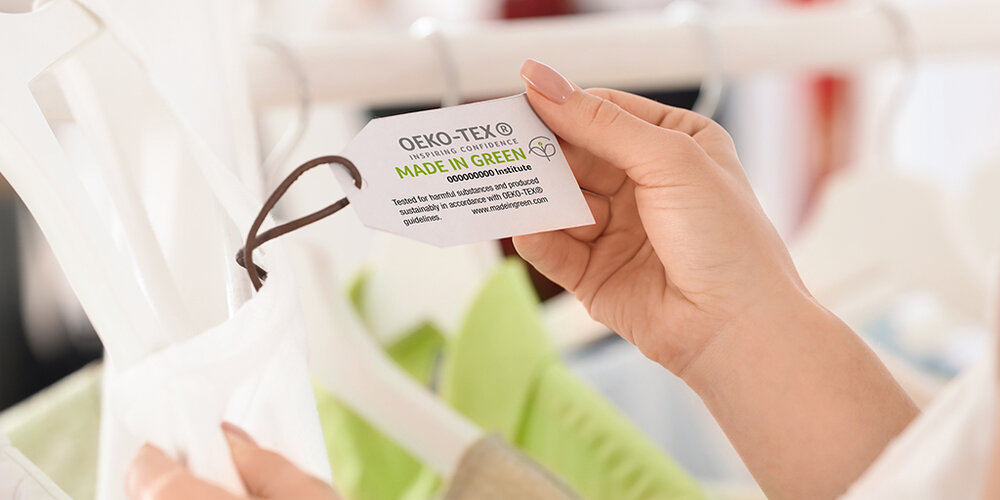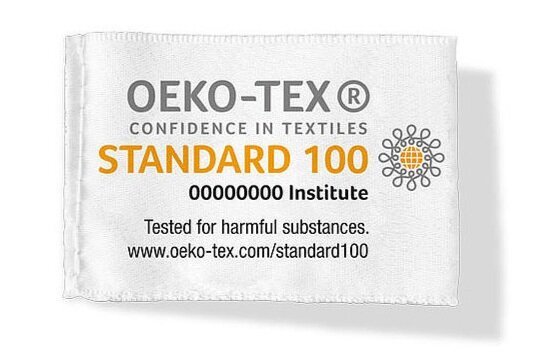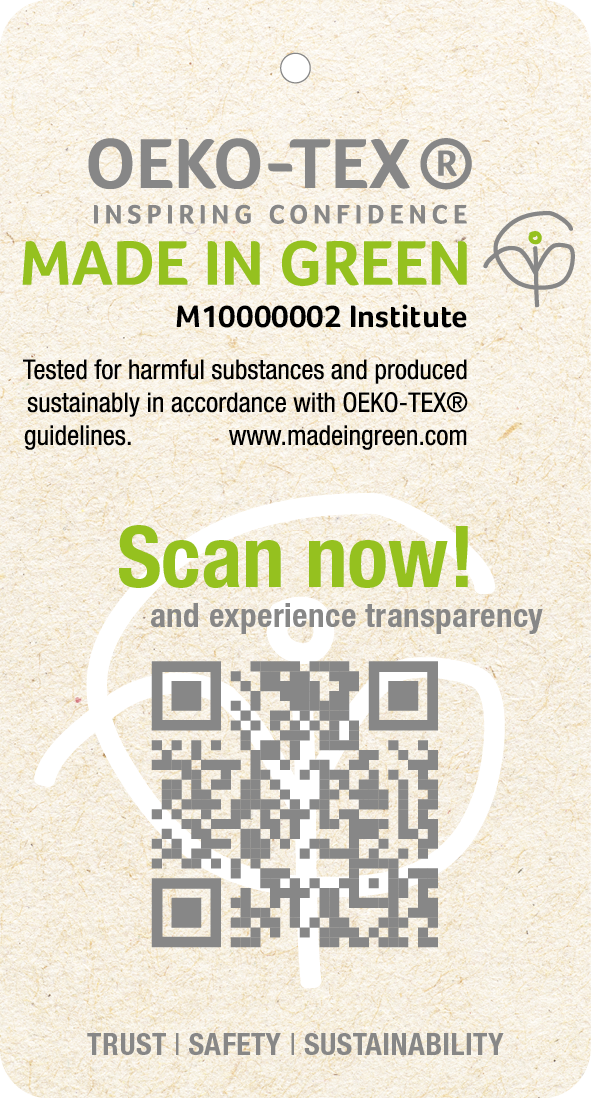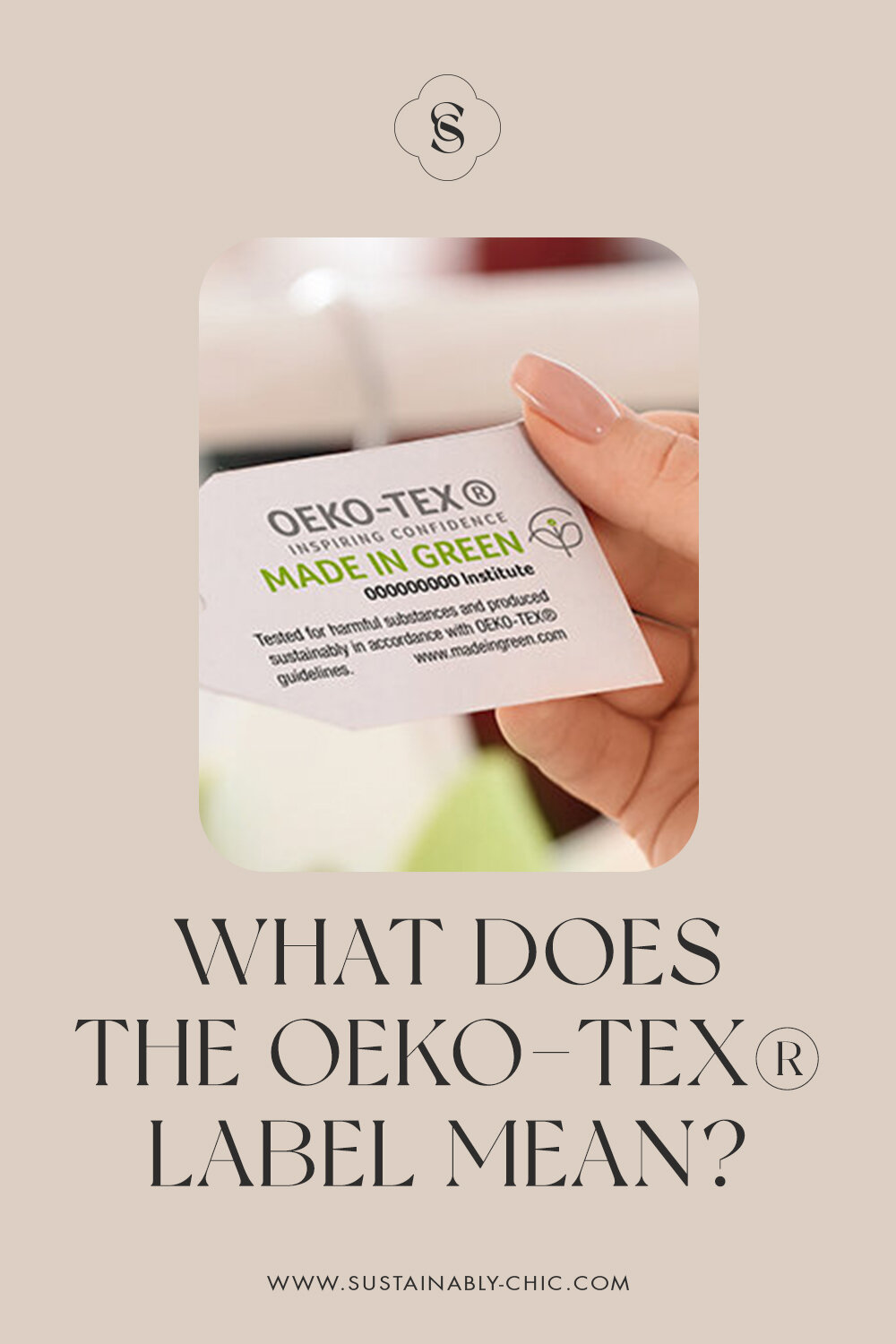What Does the OEKO-TEX® Label Mean? (And How Its Label Check Tool Is Increasing Transparency)

This post is sponsored by OEKO-TEX®. We are excited to work with OEKO-TEX® because of their commitment to making non-toxic and eco-friendly consumer products more accessible with their various certifications and labeling systems. As always, we only recommend brands we truly believe in.
You’ve probably seen the OEKO-TEX® label before; it’s commonly found on things like towels, bedsheets, and clothing. I’ve been seeing the label more often at big box stores like Target, which is really exciting because it means third-party verified eco-friendly products are becoming more accessible to all consumers.
So in this article, we’re going to break down everything you need to know about OEKO-TEX®: what it means, how their various labels differ, which brands are using OEKO-TEX® certified products, and how their MADE IN GREEN by OEKO-TEX® label is a step toward sustainability
Let’s get to it.
What is OEKO-TEX®?
In short, OEKO-TEX® is comprised of a set of third-party certifications which verify that a product is tested for chemicals that are potentially harmful to humans and our larger ecosystems. OEKO-TEX® doesn’t manufacture any products itself; rather, it verifies other companies’ products.
Started in 1992, OEKO-TEX® has since expanded to include 18 independent represented around the world and six separate sets of standards that serve different purposes. (We’re going to break those down for you in a minute.)
Their overall mission is to “create trust in textiles and leather and in their production: through increased product safety, improving sustainable production and a sustainable, transparent value-creation chain.”
Third-party certifications are super important because they help to prevent greenwashing. This is becoming more and more important as sustainability becomes trendier. It’s easy for companies to jump on the eco bandwagon with their marketing jargon, but as conscious consumers, we want companies to prove that they’re putting their money where their mouth is. Having an outside body come in and check their operations and products according to a specific set of standards can help make this happen.
What Materials Can Be OEKO-TEX® Certified?
The majority of materials and end products that are OEKO-TEX® certified are in the textile category. But within that, there is actually a pretty wide variety of goods that can potentially earn an OEKO-TEX® certification label. These include:
Any kind of textile in any stage of processing, starting from the threads to the finished goods. This includes natural fibers like cotton and wool as well as synthetics like polyester and semi-synthetics like rayon.
Other components of a finished product are also tested, including threads, buttons, zippers, linings, dyes, and coatings.
Metals and glass
Foams and plastics
Leather
Breaking Down the OEKO-TEX® Labels
There are six different labels that a material or end product can potentially earn from OEKO-TEX®. Across all of these various certifications, testing is done by an independent OEKO-TEX® partner institute using a set of specific criteria.

STANDARD 100 by OEKO-TEX®
This is the most popular label that you’re likely to see most often. The STANDARD 100 by OEKO-TEX® certification means that every component of the end product (including buttons, zippers, etc.) has been tested for harmful substances.
The substances tested for include both regulated and non-regulated ones, and in many cases, the limit values for these substances go beyond national and international requirements. The criteria catalog is updated at least once a year and expanded with new scientific knowledge or statutory requirements. This not only helps to give confidence to consumers that what they’re buying is safe, but it also helps brands and manufacturers to stay up to date with the latest data on substance safety and toxicity (which can be a lot of work when you’re also trying to run a company!)

MADE IN GREEN by OEKO-TEX®
The MADE IN GREEN by OEKO-TEX® label is similar to the STANDARD 100, but takes it even further. Not only are materials and end products tested for harmful substances, but the processes used to manufacture those products are also taken into account.
With the MADE IN GREEN by OEKO-TEX® label, they’re looking to make sure products are produced in environmentally friendly ways, from the use of chemicals to the handling of wastewater and more. Not only that, but this label also accounts for the working conditions of the workers involved in making the product as well.
This more holistic label is becoming more popular, and we’re happy to see it!
How is OEKO-TEX® Different From Other Certifications?
Different types of certifications test, audit, and verify different types of materials and products and at different stages of the production process. STANDARD 100 by OEKO-TEX®, for example, mostly looks at the safety of end products. Other certifications such as Global Organic Textile Standard (GOTS) and United States Department of Agriculture (USDA) Organic, on the other hand, look at things like how a certain product (or ingredient/material used to make a product) was grown and harvested.
Additionally, some labels may be inapplicable for certain products or materials. Rayon, for example, cannot be certified organic (since it’s not considered a “natural product” by the time it gets to its end-stage), whereas it can be certified by OEKO-TEX® to ensure it’s tested for toxic substances. (As a side note, the OEKO-TEX® certification is actually really important for materials like rayon because of the harsh chemicals that are used to turn bamboo and eucalyptus from a plant into a silky rayon fabric. This is why it’s important to buy TENCEL™ branded rayon textiles because they all carry the STANDARD 100 by OEKO-TEX® certification.)
Other labels include the Forest Stewardship Council (FSC), which certifies that wood, paper, and rubber-based products are sourced sustainably, as well as Fair Trade International, which considers the wages and working conditions of the people who make the products.
As you can see, all of these different labels test and verify different things. This is why you will often see multiple labels on one product. Under the Canopy, for example, carries the MADE IN GREEN by OEKO-TEX® label as well as the GOTS Organic and FSC certifications. This indicates that their bedding and towels have been verified by third parties across the entire life of the product, from sourcing (FSC) to growing and harvesting (GOTS), to the supply chain and end product (MADE IN GREEN by OEKO-TEX®).

How OEKO-TEX® Is Increasing Product Transparency With Their Label Check Tool
I think OEKO-TEX’s Label Check tool is really cool because it’s just one more step they’re taking to help empower consumers to take steps toward sustainability and prevent greenwashing.
Basically, this tool allows you to look up a specific OEKO-TEX® certified product using a number and/or QR code to verify whether or not the product is carrying a valid OEKO-TEX® label.
It’s super easy, too. All you have to do is:
Enter the label ID at madeingreen.com or scan the QR code.
On the page that comes up, you can view the supply chain, click on various icons to learn more about the process details, the factories where the product was made, etc.
That’s it!

Image Credit: Under the Canopy
Some of Our Favorite OEKO-TEX® Certified Brands & Products
A LOT of the brands and products we’ve been featuring on Sustainably Chic for years carry an OEKO-TEX® label. Below are some of our favorites. (These are all brands that we’ve independently curated and independently verified. Some of these links may be affiliate links, which means we may earn a small commission if you decide to make a purchase.)
Clothing & Underwear:
Towels
Bedding
Conclusion
So there you have it! Hopefully, the next time you see a MADE IN GREEN or STANDARD 100 by OEKO-TEX® label on an article of clothing or set of bedsheets, you feel educated and empowered, knowing that it’s been third-party tested and certified to be traceable and safer for people and the planet. And if you’re ever in doubt, just use the OEKO-TEX® label to verify and find out more information about the life of your product.
PIN THE PHOTO TO SAVE THIS POST FOR LATER

WANT MORE SUSTAINABLE BRANDS? VISIT OUR BRAND DIRECTORY!
Our Brand Directory is home to hundreds of sustainable brands, from makeup to cleaning supplies, from underwear to shoes. We have broken everything down by category for easy shopping, along with discount codes unique to Sustainably Chic viewers.
Shop the Brand DirectoryRELATED READING YOU MAY ALSO ENJOY:
#Content-Attribution#
Content Creator: Natalie Kay
Date:
